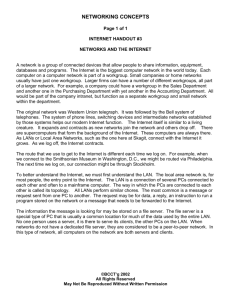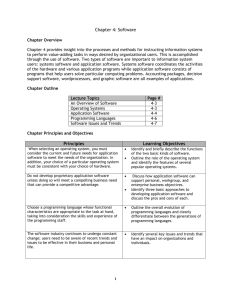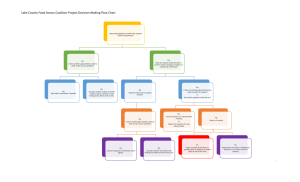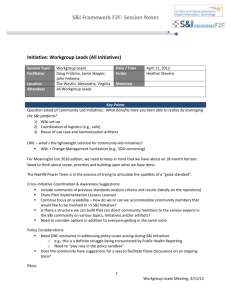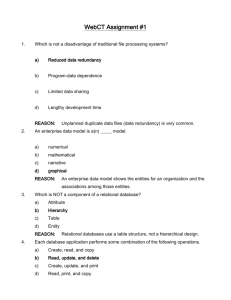Summary of March 21, 2006 HIT Subgroup call
advertisement
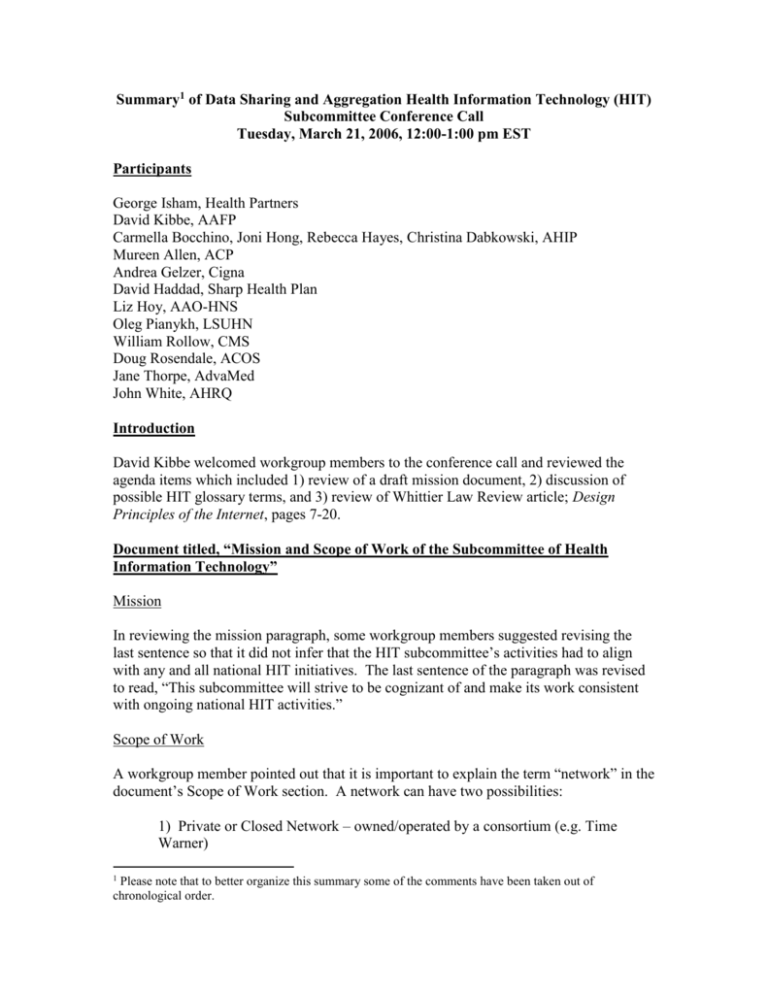
Summary1 of Data Sharing and Aggregation Health Information Technology (HIT) Subcommittee Conference Call Tuesday, March 21, 2006, 12:00-1:00 pm EST Participants George Isham, Health Partners David Kibbe, AAFP Carmella Bocchino, Joni Hong, Rebecca Hayes, Christina Dabkowski, AHIP Mureen Allen, ACP Andrea Gelzer, Cigna David Haddad, Sharp Health Plan Liz Hoy, AAO-HNS Oleg Pianykh, LSUHN William Rollow, CMS Doug Rosendale, ACOS Jane Thorpe, AdvaMed John White, AHRQ Introduction David Kibbe welcomed workgroup members to the conference call and reviewed the agenda items which included 1) review of a draft mission document, 2) discussion of possible HIT glossary terms, and 3) review of Whittier Law Review article; Design Principles of the Internet, pages 7-20. Document titled, “Mission and Scope of Work of the Subcommittee of Health Information Technology” Mission In reviewing the mission paragraph, some workgroup members suggested revising the last sentence so that it did not infer that the HIT subcommittee’s activities had to align with any and all national HIT initiatives. The last sentence of the paragraph was revised to read, “This subcommittee will strive to be cognizant of and make its work consistent with ongoing national HIT activities.” Scope of Work A workgroup member pointed out that it is important to explain the term “network” in the document’s Scope of Work section. A network can have two possibilities: 1) Private or Closed Network – owned/operated by a consortium (e.g. Time Warner) 1 Please note that to better organize this summary some of the comments have been taken out of chronological order. 2) Open Network – open to all those who participate Another member stated that a network encompasses more than just digital information and that the transmission of that information does not necessarily have to be electronic transmission unless specified as such. It was suggested that the terms open network and private or closed network be defined in the proposed HIT glossary in order to clarify these concepts. Members also suggested re-wording and clarifying some of the bullets in this section. To address the issue of digital transmission of information, the first bullet was rewritten to read, “Define those principles that should be used to support the digital transmission of relevant clinical and financial information.” In the last bullet of the Scope of Work section, a member of the workgroup believed that the task of auditing and validating publicly reported data was too big and vast of an issue for this group to approach. To that effect, the last bullet was rewritten to read, “Guidelines to assure data validation and auditing can be performed.” Draft Principles for Discussion In the draft Principles section of the Mission document, it was recommended that the Principles are rewritten into declarative sentences as opposed to current format. The first principle discussed was interoperability – the idea that computers have the ability to talk to each other. This is when sets of data produced by one system occur so that the next machine can read and interpret the information without human intervention (or if any, it is minimal human intervention). A workgroup member proposed this term be further explained in our glossary. It was also questioned whether affordability should be defined in the glossary. A workgroup member emphasized that we should not disregard the important issue of cost and that whatever system we design should not have an inappropriate cost. The last bullet of this section was rewritten to read, “System deployment and use should be designed to minimize costs to consumers, physicians’ practices, health plans, data aggregators, etc…” Next Steps David Kibbe closed the meeting and reminded the members that the HIT subcommittee does not have another call scheduled before the April 26th AQA meeting. The full Data Sharing and Aggregation Workgroup will have a conference call on Wednesday, April 5th from 1:00 – 2:30 pm EDT. David Kibbe wanted to review the draft Mission document in light of the feedback on today’s call. After editing, he will send proposed changes to this document, as well as other documents such as the draft HIT glossary, to the HIT workgroup for their 2 comments and suggestions. Depending on the response from the HIT subcommittee, David Kibbe and George Isham would like to discuss these documents with the full Data Sharing and Aggregation Workgroup on the April 5th call. 3
